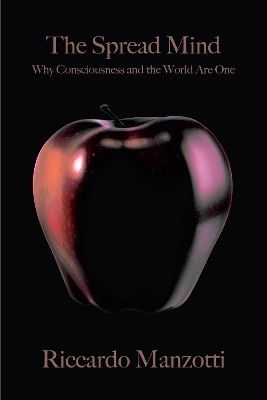
The Spread Mind
Or Books (Verlag)
978-1-944869-49-6 (ISBN)
- Titel z.Zt. nicht lieferbar
- Portofrei ab CHF 40
- Auch auf Rechnung
- Artikel merken
Once we came out of the jungle and found time to think of something besides food, sex, and shelter, we confronted the fundamental questions: what are we? Who are we? Is a person a body, a soul? How do we access the external world if we are nothing but brains encased in bodies?
As neuroscientists map the most detailed aspects of the human brain and its interplay with the rest of the body, they remain baffled by what is essentially human: our selves. In most of the existing scientific literature, information processing has taken the place of the soul. Yet thus far, no convincing account has been presented of exactly where and how consciousness is stored in our bodies.
In The Spread Mind, Riccardo Manzotti convincingly argues that our bodies do not contain subjective experience. Yet consciousness is real, and, like any other real phenomenon, is physical. Where is it, then? Manzotti's radical hypothesis is that consciousness is one and the same as the physical world surrounding us.
Drawing on Einstein's theories of relativity, evidence about dreams and hallucination, and the geometry of light in perception, and using vivid, real-world examples to illustrate his ideas, Manzotti argues that consciousness is not a ''movie in the head.'' Experience is not in our head: it is the actual world we move in.
RICCARDO MANZOTTI is a Professor of Philosophy at IULM University in Milan, Italy. He was a Fulbright Visiting Scholar at MIT. He holds a PhD in robotics, is the author of 50 papers on the basis of consciousness, artificial intelligence, machine consciousness and perception. He is the webmaster of consciousness.it and thespreadmind.com. His published work addresses the nature of the self and the meshing of technology and consciousness. Over a period of many months, The New York Review of Books Daily has posted an extended series of conversations between Manzotti and the novelist Tim Parks, in which the two attempt to dissect the nature of consciousness.
1.The Spread Mind
1.1What, where and when is experience?
1.2Experience is the object
1.3I am world
1.4A better object?
1.5Nothing appears, everything takes place
1.6Appearance is reality
1.7Shangri-La
2.The Spread Object
2.1The fridge-light model of the object
2.2Traditional and actual spread objects
2.3Senses as multiple objects
2.4Phenomenal is physical
2.5The last Ptolemaic stand
2.6Percipere est esse
3.The causal geometry of experience
3.1Stretching over space and time
3.2Glass, mirrors and beyond
3.3A storage-less model of memory
3.4Dreams and hallucinations as spatiotemporal kaleidoscopes
3.5The causal argument revisited
3.6Return to Shangri-La
4.Illusions
4.1Proxy and alleged properties
4.2Illusions as misbeliefs
4.3A zoo of illusions
4.4Benham's Top
4.5A comparison with other accounts
5.Hallucinations and dreams
5.1Ordinary and extraordinary hallucinations
5.2Gerrymandered objects and direct brain stimulation
5.3Double preemption
5.4A continuum – from objects to hallucinations
5.5The common kind assumption
6.A zoo of objects and experiences
6.1The myth of endogenous mental experience
6.2Phosphenes and blindness
6.3Visual images and congenitally blinds
6.4Geometric hallucinations
6.5Impossible, forbidden and Martian colors
6.6Additions and subtractions
6.7Afterimages
6.8The myth of supersaturated red
6.9Filling in
6.10Innate phantom limbs
7.Joint causation and wholes
7.1Actual existence
7.2Objects and wholes
7.3Joint causation
7.4No time, no wholes
7.5The cause of the cause is the effect
8.The spread now
8.1The present is not punctual
8.2The spread now
8.3Now is relative and multiple
8.4Present is near past and past is far present
8.5Pastness has no color
8.6The time-gap argument
8.7Time is an ocean, the present is its shore
9.In nature, identity is the only relation
9.1A is A
9.2Thou shalt have no other relations before me
9.3Kinds of representations
9.4Brains as world makers
10.Look at the universe and you'll see yourself
References
| Erscheinungsdatum | 01.02.2018 |
|---|---|
| Zusatzinfo | Illustrations |
| Verlagsort | New York |
| Sprache | englisch |
| Maße | 139 x 209 mm |
| Themenwelt | Geisteswissenschaften ► Philosophie |
| Geisteswissenschaften ► Psychologie ► Allgemeine Psychologie | |
| Geisteswissenschaften ► Psychologie ► Verhaltenstherapie | |
| Naturwissenschaften | |
| ISBN-10 | 1-944869-49-2 / 1944869492 |
| ISBN-13 | 978-1-944869-49-6 / 9781944869496 |
| Zustand | Neuware |
| Haben Sie eine Frage zum Produkt? |
aus dem Bereich


